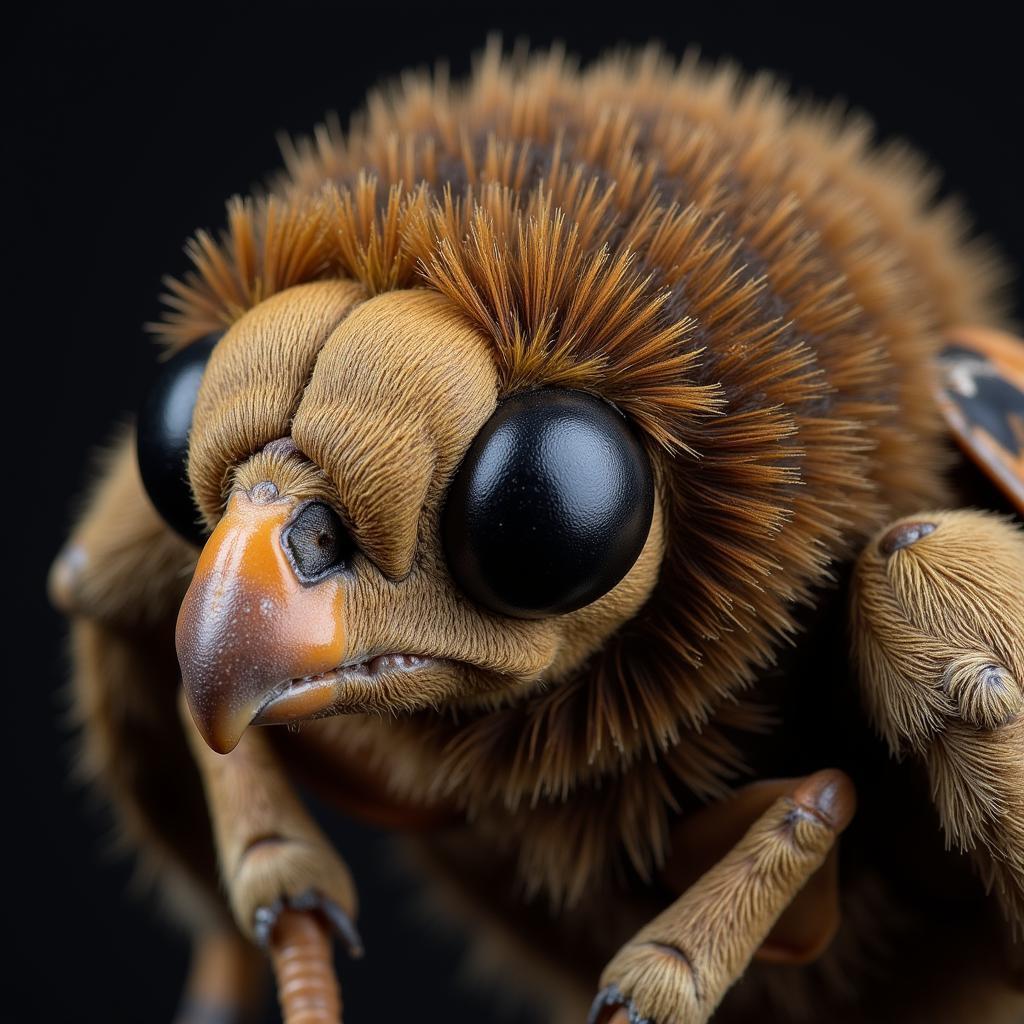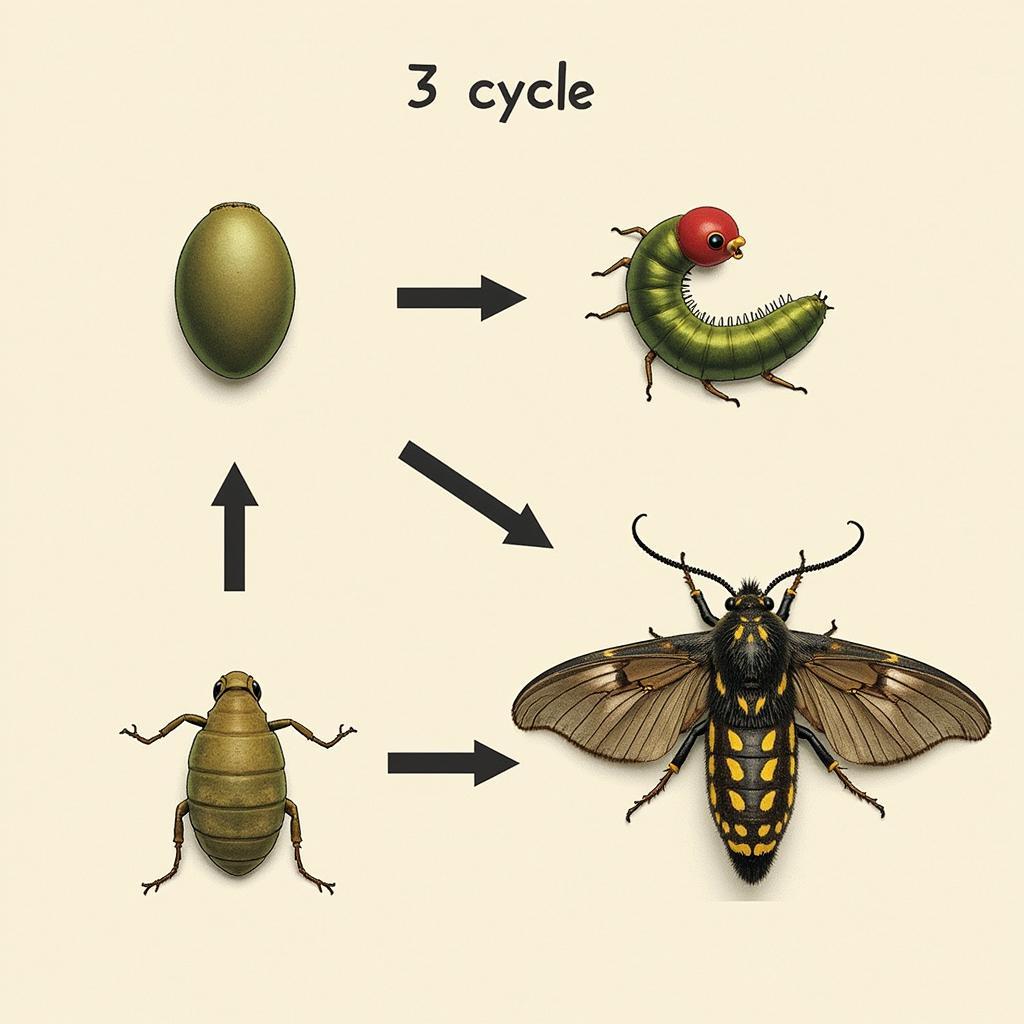Unveiling the African Death’s Head Hawkmoth: Myths, Magic, and Mystery
The African death’s head hawkmoth, a creature shrouded in myth and often associated with ill omens, holds a unique place in African folklore and the natural world. This article explores the fascinating world of the Acherontia atropos, separating fact from fiction and delving into its biological characteristics, cultural significance, and the reasons behind its ominous reputation.
The Death’s Head: Fact vs. Fiction
The most striking feature of the African death’s head hawkmoth is the skull-like marking on its thorax. This distinctive pattern has understandably fueled numerous superstitions and myths across different African cultures. Some believe the moth is a harbinger of death, while others associate it with witchcraft and evil spirits. However, beyond the folklore, the Acherontia atropos is a fascinating insect with unique behaviors and adaptations. They are known for their unusual ability to squeak, a defense mechanism against predators, and their penchant for raiding beehives for honey. This unusual behavior, coupled with the skull-like marking, contributes to the mystique surrounding this creature.
One common misconception is that the African death’s head hawkmoth actively seeks out human interaction to deliver bad news. This is simply not true. Like other moths, they are primarily attracted to light and sweet scents.
It is important to separate the cultural interpretations from the scientific reality of this fascinating creature. While the moth’s appearance has undoubtedly inspired folklore, its actual behavior is far less sinister.
After this initial wave of fear, genuine curiosity arose. People started to observe and investigate this mysterious insect. This led to a deeper understanding of its behavior and lifecycle.
 African Death's Head Hawkmoth Close-Up
African Death's Head Hawkmoth Close-Up
The Life Cycle of the African Death’s Head Hawkmoth
The Acherontia atropos has a fascinating life cycle, going through various stages of metamorphosis. From egg to larva (caterpillar), then pupa, and finally, adult moth, each stage presents unique characteristics. The caterpillars, which can grow quite large, feed on a variety of plants, including members of the potato family. They pupate underground before emerging as the striking adult moth. Understanding the moth’s life cycle helps demystify its existence and appreciate the complexities of the natural world.
The transformation from a caterpillar to a winged moth has always intrigued scientists and nature enthusiasts alike. The death’s head hawkmoth, with its unique markings, adds another layer of fascination to this process.
 African Death's Head Hawkmoth Lifecycle
African Death's Head Hawkmoth Lifecycle
Cultural Significance of the African Death’s Head Hawkmoth
Across Africa, the African death’s head hawkmoth features prominently in various cultural narratives. In some communities, its presence is associated with impending doom or illness, while in others, it is viewed as a messenger from the spirit world. These diverse interpretations reflect the rich tapestry of beliefs and traditions across the continent. Studying these cultural narratives provides insights into how different societies perceive and interact with the natural world.
“The stories surrounding the death’s head hawkmoth highlight the complex relationship between humans and nature,” explains Dr. Anika Kitoto, a renowned anthropologist specializing in East African cultures. “These narratives reflect our inherent desire to understand the world around us, even the aspects that inspire fear or uncertainty.”
Beyond Superstition: The Beauty of Acherontia atropos
It’s essential to move beyond the superstitions and appreciate the African death’s head hawkmoth for the remarkable creature it is. Its unique markings, unusual squeak, and fascinating life cycle make it a truly exceptional insect. By understanding its biology and behavior, we can dispel the myths and appreciate the biodiversity of the African continent.
“The death’s head hawkmoth is a testament to the beauty and diversity of African wildlife,” states Dr. Ben Okoye, a leading entomologist. “It reminds us that even the creatures we fear can hold incredible wonder and scientific value.”
Conclusion: Embracing the Wonder of the African Death’s Head Hawkmoth
The African death’s head hawkmoth, a creature wrapped in mystique and folklore, deserves our admiration and further study. By understanding its biology, life cycle, and cultural significance, we can appreciate the intricate web of life it represents and dispel the unwarranted fear associated with its unique appearance.
FAQ
- Is the African death’s head hawkmoth poisonous? No, the moth is not poisonous to humans.
- Do they really bring bad luck? No, this is a superstition. Their appearance has simply led to folklore.
- What do they eat? They primarily feed on honey and nectar.
- Where can you find them? They are found throughout Africa and parts of Europe and Asia.
- What is their lifespan? Their lifespan is relatively short, typically a few months.
- Why do they squeak? The squeak is a defense mechanism to deter predators.
- How big do they get? They are one of the largest moth species, with a wingspan of up to 5 inches.
Need support? Contact us 24/7: Phone: +255768904061, Email: [email protected], or visit us at Mbarali DC Mawindi, Kangaga, Tanzania.